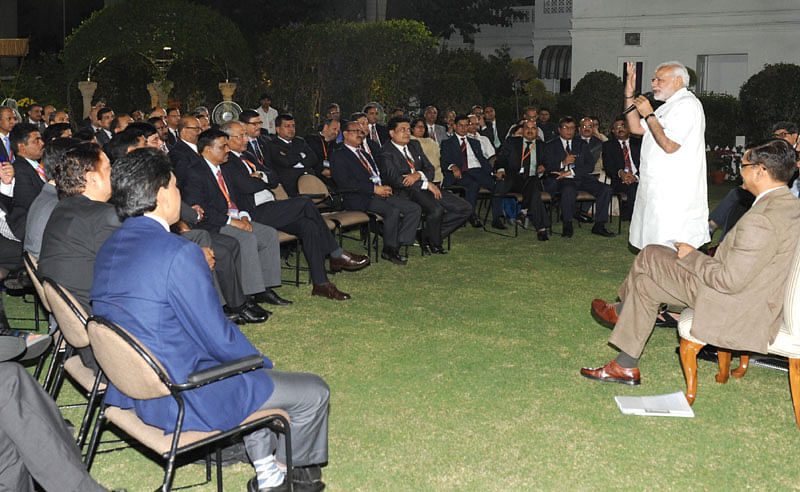UPSC and Cabinet Secretariat are confused about how to take the matter forward. The 6,000 applications haven’t even been sorted yet.
New Delhi: Prime Minister Narendra Modi’s pet lateral entry scheme, which wants to appoint private sector specialists as top civil servants in the central government, is stuck in limbo.
It has been more than two months since 6,000 candidates applied for 10 joint secretary positions across ministries, but the Union Public Service Commission (UPSC) and the Cabinet Secretariat are confused about how to take the process forward.
Top sources said the government is yet to sort the applications and select candidates for interviews.
Also read: Centre’s IAS officers shortage: Need for lateral entry of experts or should states fix gap?
A source in the UPSC said the commission was asked to take forward this exercise of sifting and conducting interviews, but it has told the government it won’t be able to. It is, however, yet to take a final call on the issue.
Objective of the scheme
The idea of the lateral entry scheme is to invite fresh talent into the government. It is also pegged as a measure to address the shortage of IAS officers in the Central government.
The concept itself is not new. Two prominent examples of lateral entry in today’s administration are Rajesh Kotecha, special secretary in the Ministry of AYUSH, and retired IAS officer Parameshwaran Iyer, secretary in the ministry of drinking water and sanitation.
But the government’s advertisement for the 10 joint secretary positions was an attempt to institutionalise this practice.
In July, it invited applicants with expertise in financial services, revenue, economic affairs, agriculture, cooperation and farmer welfare, road transport and highways, shipping, environment, forest and climate change, new and renewable energy, and civil aviation and commerce.
The plan will be extended to other ministries if it is successful.
Poor planning and implementation
The UPSC source said a key reason for the current state of the plan was due to its poor implementation from the beginning.
“The sluggish bureaucracy is to blame here. The scheme was flawed from the day it was announced,” the source said.
“No proper planning was done before putting out the sudden advertisement. Who would carry out the initial selections and the interviews — the ministries concerned, the Department of Personnel and Training, or the UPSC? Roping in the UPSC was a sudden decision.”
The source also said the ministries concerned were not taken into confidence before applications were invited.
The criteria laid out in the advertisement were broad-based, and so failed to provide a narrow window to attract people of eminence or domain experts in the fields advertised for.
“It also invited fewer applications than expected from the pool of private sector talent that India possesses,” the source said.
A government source also pointed to the lack of quality applications received by the government, which ThePrint had reported earlier.
“The lack of applications from quality candidates is also a reason why the government has not been able to shortlist candidates from the existing applications,” the government source said.
“Moreover, a joint secretary position with a contract period of just three to five years may not be as attractive a proposition for a top private sector professional who has put in 15 years into a profession.”
Also read: India faces severe shortage of IAS officers despite Modi govt’s recruitment spree
Besides private sector professionals, several junior government officials working with state governments had also applied for the positions.
Accusation against IAS lobby
A senior government official who does not belong to the Indian Administrative Service (IAS) said the lateral entry mess was only to be expected — after all, it is serving or retired IAS officers who are supposed to carry out the process.
“The IAS lobby is strong and it doesn’t welcome people from other services in positions they think are their domain, let alone those from private sector,” the official said.
